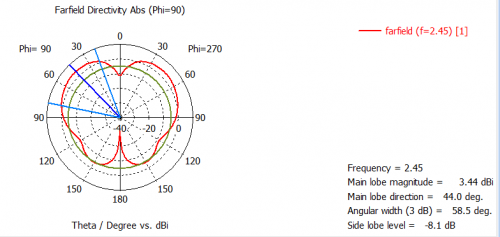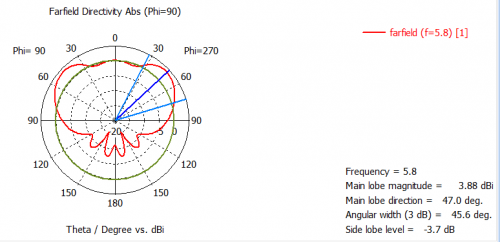Projects:2018s1-196 Concealed Wearable Antennas
The aim of this project is to design two button antennas as wearable technology that can be attached to the clothes. The button will be designed based on metallic antenna plates and another one based on dielectric plates. The simulation tools of Computer Simulation Technology, CST will be used for simulation and the designs will be fabricated and tested in real life. The antennas also should be designed with 2.4 GHz and 5.8 GHz frequency band and have Omni-directional radiation patterns.
Contents
Introduction
The wearable technology become important to our daily lives in this new development era. So, button antenna is chosen as the best candidate for wearable antenna. As we know, buttons are already included in many clothes that we wear every day. They can be located in different areas on textiles as well such as on t-shirt, jeans, jackets and others. Some of them also using multiple buttons on a cloth. So buttons are already heavily used in textiles or clothing. Users already accepted the look of the button so there is no need for users to refine the fashion or accept the new concepts as they already comfortable wearing buttons on their daily life. Many of them also already made from metal so incorporating metallic button in the antenna would not be a new concept to the users. The buttons also have small and circular in shape as well in which they are compact and easy to carry. Hence, there is an opportunity for buttons to serve a double-purpose which is ideal when looking at the wearable technology.
Project team
Project students
- Christian Colombo
- Siti Nurfatinah Faizal
Supervisors
- Prof. Christophe Fumeaux
- Dr. Shengjian Chen (Jammy)
Project status
Design, fabrication and testing completed.
Design Process
Design A: Siti Faizal
Design Overview
The first design is formed from a metallic, top-loaded monopole antenna, comprised of two metal discs separated by a low permittivity dielectric material. The antenna is fed by a microstrip line, which minimises the height of the assembly, and allows for it to be more easily incorporated into clothing. There is also a center pin in the middle of the antenna which connect the top plate with the ground plane in order to increase the strength of the button.The antenna then is mounted on a PF-4 Foam substrate with a conductive fabric ground plane.
Simulation Results
Figure 3 shows the performance of the antenna in terms of return loss (dB) vs the frequency (GHz). It has a desirable return loss of -30.65 dB at the low frequency of 2.45 GHz and -12.114 dB at high frequency of 5.8 GHz. As the reflection coefficient is lower at low frequency compared to high frequency band, so it is optimized for lower frequency operation. The major factor of getting the accurate matching frequency at both bands is by varying the diameter of the discs, cylinder and height of the antenna.
The radiation patterns of the antenna are shown in Figure 4 and 5. At low frequency band (2.4 GHz), the antenna has an Omni-directional pattern with gain 3.44 dBi. It has a doughnut shape pattern where the antenna is highly radiated around the antenna. Meanwhile for high frequency band (5.8 GHz), it has a directive pattern in which the antenna is highly directional and a lot of powers is been pointed towards upper direction. It has 3.88 dBi gain which is higher than the low frequency gain. The radiation patterns for both frequency seem to have a good pattern and being directed correctly as predicted.



